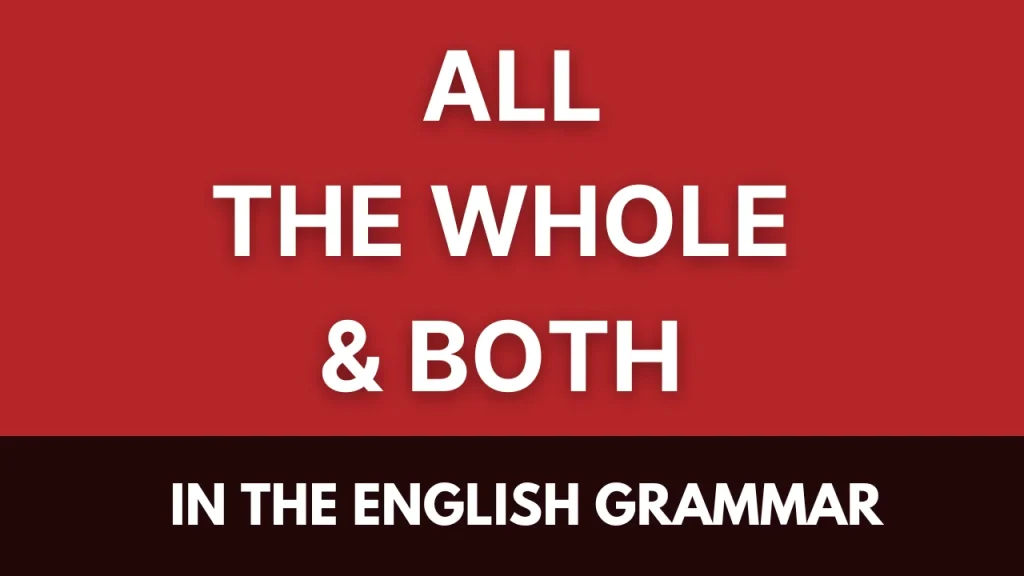
In the English language, words like “all,” “the whole,” and “both” are commonly used to describe entirety, entirety with emphasis, and pairs respectively. However, these seemingly similar expressions possess subtle differences in meaning and usage. In this comprehensive article, we will delve into each of these words, exploring their distinctions and providing examples to help you grasp their nuances. By understanding these differences, you can enhance your command of English and communicate more effectively.
1. All:
The word “all” is a versatile term that refers to the complete quantity or extent of something. It can function as a pronoun, adjective, or adverb, depending on its usage.
a) As a pronoun:
- Example 1: “All of the students passed the exam.”
- Example 2: “I ate all the cookies.”
b) As an adjective:
- Example 1: “All students must attend the meeting.”
- Example 2: “She invited all her friends to the party.”
c) As an adverb:
- Example 1: “He ate all of the cake.”
- Example 2: “I searched all over the house for my keys.”
The key aspect to remember about “all” is that it encompasses the entirety of a particular group, object, or quantity.
2. The Whole:
“The whole” emphasizes completeness or entirety, often with a sense of unity. It is used to describe something as a unified entity, encompassing all parts or aspects.
a) With countable nouns:
- Example 1: “The whole team celebrated the victory.“
- Example 2: “She read the whole book in one night.“
b) With uncountable nouns:
- Example 1: “He drank the whole bottle of water.”
- Example 2: “I spent the whole day at the beach.“
c) With abstract concepts:
- Example 1: “The whole idea is to promote sustainability.”
- Example 2: “She understood the whole concept of the project.“
Unlike “all,” which focuses on the complete quantity or extent, “the whole” emphasizes the unified nature and entirety of the subject.
3. Both:
“Both” is used when referring to two people, objects, or groups together. It emphasizes the combined or joint nature of the subjects being discussed.
a) With countable nouns:
- Example 1: “Both dogs were adopted from the shelter.”
- Example 2: “We bought new dresses for both girls.”
b) With pronouns:
- Example 1: “Both of them enjoyed the movie.”
- Example 2: “Both of us will attend the conference.”
c) With adverbs:
- Example 1: “They both arrived late for the meeting.”
- Example 2: “She can speak both English and French fluently.”
In English, we use “Both” to emphasize the joint connection or similarity of two entities, highlighting their presence or involvement.
Conclusion:
Understanding the nuances among “all,” “the whole,” and “both” is crucial for effective communication in English. While “all” refers to the complete quantity or extent, “the whole” emphasizes entirety and unity. On the other hand, “both” highlights the joint nature of two entities. By mastering the distinctions and practicing their usage in various contexts, you can enhance your command of the English language and convey your thoughts with precision. Remember to pay attention to the subtleties of these expressions, and with consistent effort, you will become more confident and proficient in expressing yourself accurately and effectively.